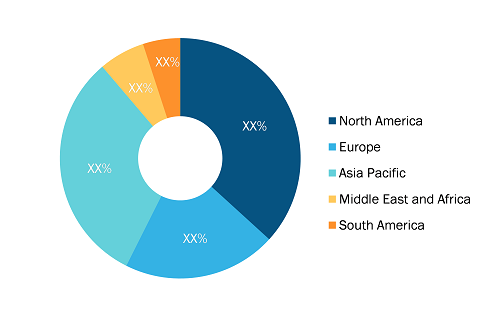Innovations in Wind Turbine Rotos Blade Designs to Drive the Wind Turbine Rotor Blade Market Growth
According to our latest market study on " Wind Turbine Rotor Blade Market Forecast to 2030 –Global Analysis – by Type and Deployment Type," the market is expected to grow from US$ 15,935.50 million in 2022 to US$ 32,999.77 million by 2030; it is anticipated to register a CAGR of 9.5% from 2022 to 2030.
Blade design and manufacturing are rapidly evolving as a result of innovation and lean manufacturing. Long-dominant blade designs and production processes are changing, with implications all the way up the value chain, from materials such as resins, fiberglass, and carbon fiber to blade suppliers and turbine makers. The evolution of the sector has enabled technological innovation to not only push the industry forward but also to reduce manufacturing costs. Wind turbine blade manufacturing, in particular, is experiencing significant design innovation and evolution, with turbine manufacturers making major capital-intensive investment changes in blade designs, materials used, and the manufacturing processes behind them. Many government organizations also invested heavily and undertook research activities to develop innovative designs. In the late 1990s, the DOE's Wind Energy Technologies Office (WETO) began research at Sandia National Laboratories, the National Renewable Energy Laboratory, universities, and manufacturing firms with the goal of improving efficiency in order to develop wind turbines capable of producing more electricity. This effort investigated a wide range of ideas with the goal of enhancing wind turbine aerodynamic efficiency, performance, and manufacturing ease. Among these were bend-twist-coupled wind turbine blades and flatback airfoils, which were developed concurrently. Wind turbine size expansion is a prominent trend in the industry. ACT Blade, based in the UK, is focusing on technological changes to address the issue of blade weight. It is designed with lighter blades, which will allow it to produce longer blades with less bulk. These blades can provide greater energy while requiring little change in turbine loads. According to the company, a 10% longer blade may create 9.33% more energy while lowering energy costs by 6.7%. Unlike traditional fiberglass blades, blades that are manufactured are partially recyclable. This would assist in reducing landfill waste while also contributing to responsible energy production. These innovations have increased the adoption of such efficient and effective blades in the wind turbine industry, ultimately driving the wind turbine rotor blade market growth.
Wind Turbine Rotor Blade Market Share — by Region, 2022
Published Report - Wind Turbine Rotor Blade Market Size and Forecasts (2020 - 2030), Global and Regional Share, Trends, and Growth Opportunity Analysis Report Coverage: By Type (Below 40m, 41-60m, 61-70m, and Above 70m); Deployment Type (Onshore and Offshore), and Geography
Wind Turbine Rotor Blade Market Research Report by 2030
Download Free Sample
Source: The Insight Partners Analysis
Europe was the 2nd largest region in the new capacity additions in the world, with total wind power capacity additions of more than 19 GW in the year 2022. 87% of the new wind installations in Europe in 2022 were onshore wind. Countries that dominate onshore wind power are Sweden, Germany, and Turkey. The UK registered the highest number of new wind installations, accounting for most of the new offshore wind installations. This is expected to drive the growth of the wind turbine rotor blade market during the projected period.
Europe accounted for a total of 236 GW of wind capacity till 2022. As per the WindEurope (ASBL-VZW) Association, Europe is expected to install 116 GW of new wind farms from 2022 to 2026. Three-quarters of these new capacity additions will be onshore. Germany will be Europe's largest wind market owing to the strong expected performance of its onshore market, with a capacity of 19.7 GW and a rising offshore installations capacity of 5.4 GW. Thus, such upcoming trends in installing wind power capacity are anticipated to drive the wind turbine rotor blade market share of Europe during the projected period.
TPI Composites SA, Vestas Wind Systems A/S, Enercon GmbH, LM Wind Power, Siemens Gamesa Renewable Energy SA, Acciona SA, Suzlon Energy Ltd, Nordex SE, Envision Group, and Lianyungang Zhongfu Lianzhong Composites Group Co. Ltd are among the key wind turbine rotor blade market players profiled during this study. In addition, several other important wind turbine rotor blade market players have been studied and analyzed during the study to get a holistic view of the wind turbine rotor blade market and its ecosystem.
Contact Us
Phone: +1-646-491-9876
Email Id: sales@theinsightpartners.com